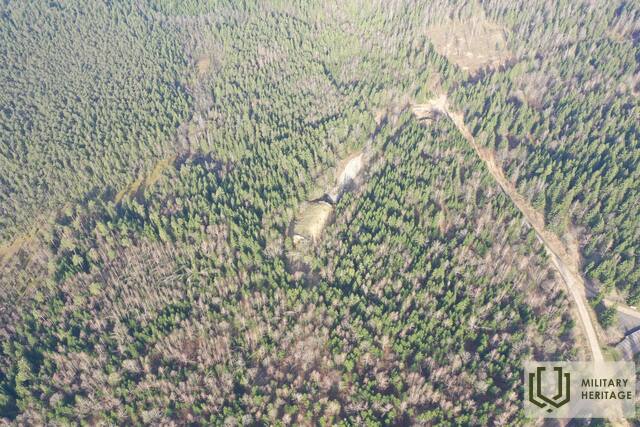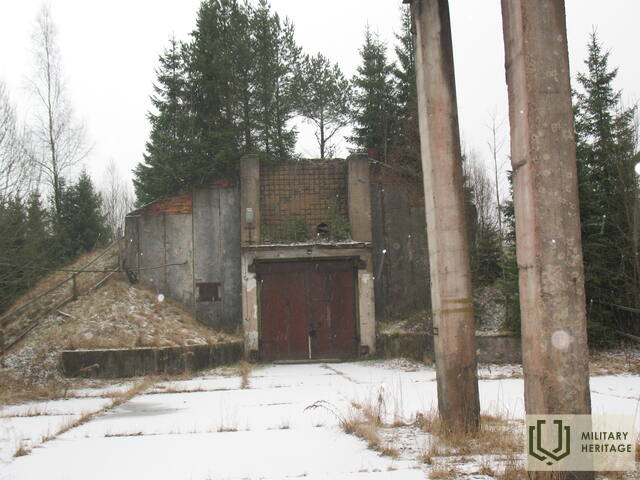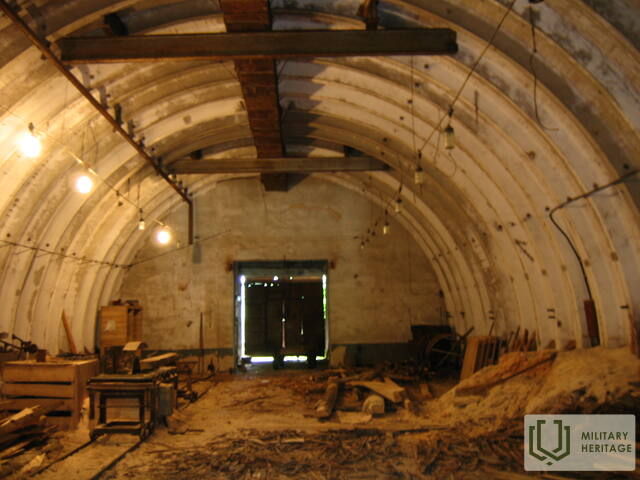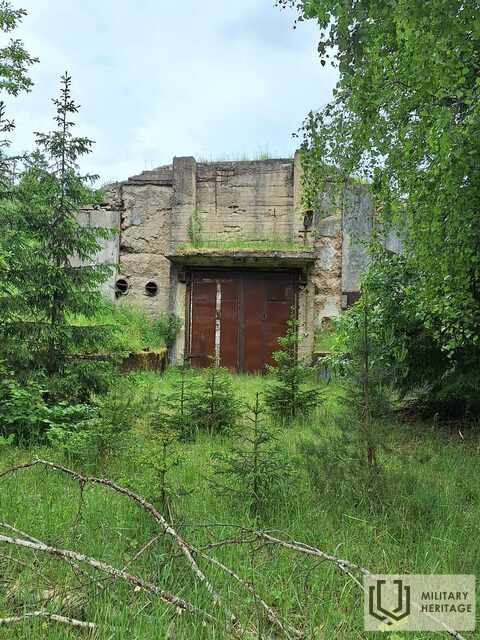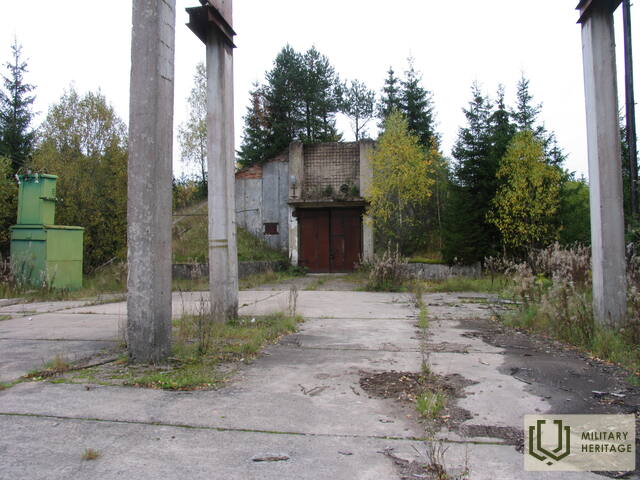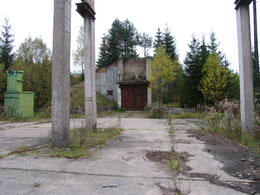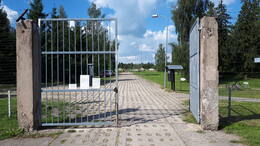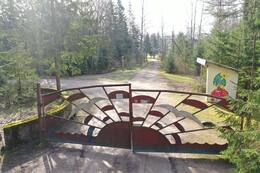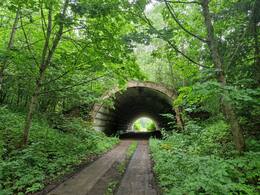About the secret hangar of the nuclear base
A top-secret hangar was installed at the underground thermonuclear missile base in the Plokštinė forests, about which local residents still know very little and whose purpose is shrouded in rumors about the storage of nuclear missile warheads.
"We don't know what was inside. There were all sorts of rumors, even that nuclear warheads were stored here," says local resident Stanislovas Puidokas. The construction of the hangar was shrouded in extreme secrecy. A local resident who transported gravel for the construction recalls: "they would only drive as far as the so-called technical zone [...] 2 km from the hangar under construction. And then the officers would take over the car and drive on themselves. They would return the empty car." For camouflage purposes, the hangar was covered with a layer of gravel, on top of which a layer of earth was poured. Today, the object is overgrown with bushes, but it has survived as a silent witness to the mysterious Soviet military base.
Related timeline
Related objects
Nuclear warhead storage (hangar) in Plokštinė
On December 31, 1962, one of the first underground R-12 ballistic missile launch complexes in the Soviet Union, Dvina, began operating in the Plokštīne forests (Plungė district).
From 1963 to 1978, the complex housed 4 medium-range ballistic missiles R12 (SS-4 Sandal), armed with thermonuclear warheads with a yield of 2.3 megatons. All missiles were aimed at Western European countries. This complex, together with ground-based launch bases for similar missiles, formed a single Soviet nuclear weapons group in Lithuania, capable of destroying all of Europe. During the 16 years of operation of the complex, not a single missile was launched, although in 1968, during the Prague Spring, military readiness was declared.
Approximately 0.5 km from the R-12 Dvina nuclear missile launch base, a military camp and a nuclear warhead storage facility (hangar) were built. Very little is known about the purpose of the hangar. It is believed that there were repair shops and a cargo yard here, as well as a hangar where the R-12 thermonuclear missile warheads were probably stored. The hangar is a huge, approximately 60 m long concrete building, covered with a layer of earth on the outside and hidden among the forests.
Currently, the building, like the entire former underground missile launch base, belongs to the Samogitian National Park Directorate. The object is not open to visitors. It cannot be viewed from the inside. However, the building can be viewed from the outside without prior reservation.
Cold War exposition
On 31 December 1962, one of the first underground launch complexes for R-12 ballistic missiles in the Soviet Union, the Dvina underground launch complex, was put into operation
in Plokštinė Forest (Plungė district).
Between 1963 and 1978, four R12 medium-range ballistic missiles (SS-4 Sandal) equipped with a 2.3-megatonne nuclear warhead were deployed at the complex. All the missiles were aimed at Western European countries. This complex, together with similar surface-launched missile bases, formed a single Soviet nuclear arsenal in Lithuania, which was capable of destroying the whole of Europe. In its 16 years of operation, not a single missile was fired, despite the declaration of combat readiness during the Prague Spring in 1968.
After the Soviet soldiers left on 18 June 1978, the poorly guarded military facility was vandalised and looted. In 1993, when the complex was handed over to the Žemaitija National Park Directorate, its restoration began. In 2012, the Cold War exposition was opened. Today, this once very secret and guarded place is open to the public. A historical exposition on the Cold War period is on display at the former missile and equipment control room house. To date, it is the only museum in urope where a preserved underground missile launch silo is on display.
Plokštinė Military Town
In 1962, one of the first underground launch complexes for R-12 ballistic missiles in the Soviet Union, the Dvina, was put into operation in Plokštinė Forest (Plungė district).
A military camp was set up 0.5 km from the missile launch site. It occupied an area of 12 hectares, and approximately 30 buildings were built here for various purposes, including residential houses (barracks), officers’ headquarters, two canteens, a boiler house, a power station, a medical post, a club, a pig farm, warehouses, garages, and other structures.
The Plokštinė underground missile launching complex was operational until 18 June 1978. The Soviet soldiers left the area, taking only their weapons with them. In 1979, the management of the former military complex was transferred to the Republican Association of Agricultural Recreation Facilities of Plungė District, and the Plateliai Pioneer Recreation Camp “Žuvėdra” was established at the military campus site. The site was reconstructed and adapted to the needs of the camp, which operated until 1990. After the restoration of Lithuanian independence, the Pioneer Camp was closed.
Since 1993, the site has been managed by the Žemaitija National Park Directorate. In 2017, many of the structures on the military campus were demolished due to their state of disrepair. Today, there are about ten buildings left at the site, and visitors may see them from the outside. Information boards about the former buildings and their functions have been installed.
Šateikiai ground missile base
In 1960, the Šateikiai Ground Missile Base was built in the forests adjacent to Šateikiai of Plungė district. It was one of four bases of its kind in Lithuania. Four launching pads for R-12 (SS-4 Sandal) medium-range ballistic missiles had been built at the base. Once the signal was received, the missiles could be fired at the European countries of the NATO bloc.
In 1962, during the Caribbean crisis, nuclear missiles were moved from the Šateikiai missile base to central Cuba. The highest level of alert at this base was declared in 1968 during the Prague Spring – the democratic change in Czechoslovakia. At the time, one of the missiles was aimed at the Federal Republic of Germany because the NATO bloc was likely to support the Czechoslovak rebels with its own weapons.
The Šateikiai base was closed in around 1978 because it was considered obsolete and its maintenance – irrational. The closure was also prompted by the fact that by the 1980s it was clear that US intelligence services had identified the locations of stationary missile launch bases. The abandonment of the missile launch site caused structural damage to buildings. The remains of six reinforced concrete warehouses (hangars) are still present on the grounds of the base, as well as bush-covered surface launching pads for rockets.





